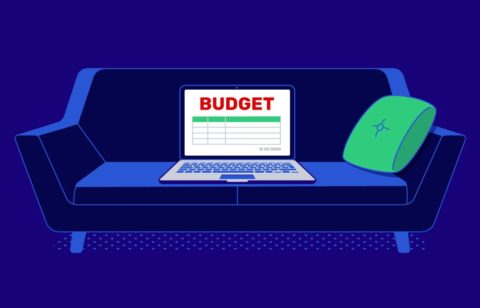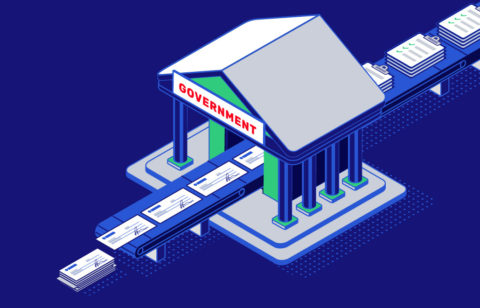With the economy booming due, in part, to President Trump’s tax cut for businesses and rollback of business regulations, U.S. companies are now reinvesting cash into their businesses in an effort to grow. The money in their pockets is going toward expanding their facilities and hiring more workers to increase productivity and boost profits.
Optimism in the U.S. economy by consumers and businesses alike is soaring, and business owners feel now is the right time to grow. Because of this optimism, the current low unemployment in the U.S. should continue to fall even further. There’s speculation that it could possibly fall to under 3%, a low not seen since 1953.
What Are Financial Analysts Saying?
Economists at some of the largest U.S. financial institutions such as JPMorgan Chase & Co., Moody’s Analytics, Goldman Sachs, and Deutsche Bank all agree that the economy is on very solid ground and, with additional fiscal stimulus coming, it could continue to help drive unemployment lower. With unemployment already surpassing lows not seen in almost two decades, economists feel that a further fall in the unemployment numbers is a sure bet.
Although workers not previously counted due to dropping out of the workforce entirely are now returning to the workforce in droves, they still feel declines are possible unless Federal Reserve Chairman Jerome Powell takes staunch measures to slow down the economy. Goldman Sachs chief economists say they’re projecting unemployment to reach 3.25% by the end of 2019, with the possibility that it could actually sink below the 3% mark.
A drop below 3% hasn’t occurred in over six decades, during wartime when millions of U.S. citizens were serving overseas in the military, fighting the Korean War. The effects of unemployment numbers that low could mean a significant climb in wages, tax revenue for the U.S. government, and a red-hot economy, all fueled by consumer spending and high confidence.
Will the U.S. Economy Be at Risk of Overheating?
The makers of monetary policy have voiced some concerns over the possibility of the U.S. economy overheating, especially on the heels of the Trump administration’s successful passage of the tax cuts and the subsequent increases in spending by the government. Economists suggest this could mean that the Federal Reserve would need to raise interest rates as frequently as four times a year over the next two years to head off inflation and keep the economy in check.
Another interesting aspect to consider is that the rate of employment compared to the size of the population suggests that there are more available workers than the low unemployment numbers indicate. This truth could help stave off inflation and save the economy from overheating, thereby stopping the Federal Reserve from raising interest rates so frequently.
The last year and a half has seen an especially steep decline in the unemployment rate as the Trump Administration’s monetary policies have taken hold. At the start of 2017, unemployment was holding at 4.8%. Recently, we’ve seen it dip as low as 3.8% before settling at 4%. The recent rise is likely due to many people returning to the workforce after years of sitting on the sidelines. In fact, estimates say that half a million people re-entered the workforce in June alone. These large increases in workforce participation will only last so long and are unlikely to continue propping up unemployment numbers. After the majority of those who’ve been out of the workforce for an extended time, and are therefore unaccounted for, return to work, the unemployment rate should fall even further.
The falling unemployment numbers are also due to an expanding GDP that’s outpacing even the best current estimates by prominent financial analysts. This is happening from true economic growth and not from the labor force contracting. In fact, forecasts say that participation in the workforce will remain at a stable number, as previously discouraged workers coming back in will be balanced by Baby Boomers reaching retirement age and exiting. Moreover, several prominent economists feel that the current estimates might be overly conservative due to rising opportunities for the heart of the workforce, those between the ages of 25 and 54. If the Federal Reserve doesn’t institute monetary policy that puts the skids on the labor market, we could see payrolls continue to grow at a significant clip without seeing the unemployment rate slip much lower.
If the Federal Reserve does accelerate a rise in interest rates to slow down the economy, the hope is that it’s not too aggressive. Overly aggressive actions could cause upset to the stock market and other financial markets and increase the chance the U.S. economy begins a recession. However, with the current predicted schedule of interest rate hikes, it’s unlikely to slow down the fall in unemployment numbers.
What Happens at Very Low Unemployment?
Several things can happen when the unemployment rate in America falls to extraordinarily low levels. American businesses, though, are incredibly nimble and adaptable when it comes to a changing labor market. Businesses learn new ways to source workers, strategically pay more for specialized positions, and adapt their operations to accommodate their available labor pool. This is a good sign, as employers keeping pace with the moving job market equates to a more stable future for business and for the economy. Consider some ways they move and shape their business with the ebb and flow of the workforce.
Implementing more automation
Getting machines to perform tasks instead of people is an investment that gives the business owner a hefty return. Although the initial cost of machinery and implementation can be high, the investment usually pays for itself in relatively short order. Then, aside from some maintenance, the company can enjoy free labor for the life of the machine. Sometimes, just automating a simple task such as applying labels or sealing bags can save many hours of labor over the cost of a week. In addition, the consistency of doing it right the first time can save the cost of having to discard product that isn’t up to standards.
Another key benefit to businesses when they automate, aside from eliminating wages, is lowering the cost of employee benefits. Machines don’t require health insurance or vacations, and they never call in sick. This can result in huge savings every year.
One area of business that constantly struggles with the high cost of labor is the restaurant business. Running a restaurant requires a lot of labor, not just to prepare the food, but also to take care of customers. Automation is a way for restaurants to mitigate the high cost without sacrificing quality.
McDonald’s has been at the forefront of automating the ordering process through the implementation of self-order kiosks. The leader in the quick-serve industry recently announced that it’ll be rolling out mobile ordering and self-serve kiosks at the pace 1,000 stores per quarter over the next two years. This will have a significant impact on business, as has been demonstrated through the implementation of these kiosks in other parts of the world.
Self-order kiosks bring several advantages. First, they allow restaurants to reduce labor or shift it to parts of the operation that are more important, such as food quality, food safety, or order accuracy. Kiosks also prompt customers to order more items, which drives sales. Finally, orders placed through kiosks have a higher degree of accuracy, which drives down the cost of food waste and drives up the level of customer satisfaction. These are all significant wins for any business.
Raising pay for key positions
Being strategic with labor dollars is also a way that businesses are mitigating the impact of low unemployment on their operations. By raising pay for positions that play a key role in the success of the business, they can attract potential employees who have a higher degree of education, skill, and experience. This can make them more competitive in the labor marketplace, as they can have more employees to consider and fill important positions quickly. This will translate to more efficiencies in the business overall and the possibility of increased profits.
Doing more with less
Sometimes, business owners have the foresight and strategic skills to reconfigure their business to run on less labor. Or, they’re smart enough to hire a consultant to show them how to do it. Operating a business with fewer workers can have big payoffs as long as there’s no compromise in product quality, output, or employee job satisfaction. With fewer employees, companies pay less for wages and benefits, and have lower training costs. There are also fewer interpersonal issues to deal with, and less sick time to cover. Sometimes, just a small reduction in labor can mean the difference between making a profit and losing money. It can also be a great strategy in combating a tight labor market.
Adding job perks
When job markets are tight, employers have less room to be picky about whom they choose to hire. This can sometimes lead to a lower level of skill and experience within a business’ workforce. One way to combat that is to stand out from the competition by adding in more job perks. When considering positions of equal pay, potential employees will usually choose the position that offers more in the way of personal benefit.
Many times, just by being creative, employers can offer additional benefits that end up costing the business very little in the end. These include things such as company picnics, employee lounge space to de-stress, provided lunches, or product discounts. Companies that focus on quality of life and family have a high retention rate. These benefits can include longer or more flexible maternity leave, work-from-home options, the ability to accrue more paid time off, or just being flexible with family situations. Bottom line: benefits are always a great selling point for potential employees.
Creating an employee pipeline
One of the greatest assets of a successful company is bench strength. Smart companies know that hiring from within not only boosts employee morale, it also reduces turnover and lowers training costs. Filling employment needs from the bottom up is a way many companies are combating the low unemployment labor crunch. By promoting from within, they’re able to fill key slots with employees that require less training. Additionally, they’ll likely cost less than if the company hired someone from outside. As employees move up in the company, lower positions are rife with entry-level employees at entry-level pay. Savvy employers are romancing these entry-level employees before they graduate in an attempt to keep them off the open market.
As the U.S. economy grows, low unemployment is going to be a continual boon for the American worker, but a perpetual challenge for U.S. companies. However, the American business owner has seen years of struggle as the U.S. economy has sputtered for the last decade in an attempt to climb out of bleak financial times. Low unemployment offers a challenge to business owners, but it’s a necessary evil, as it creates a thriving environment in which businesses can grow.





